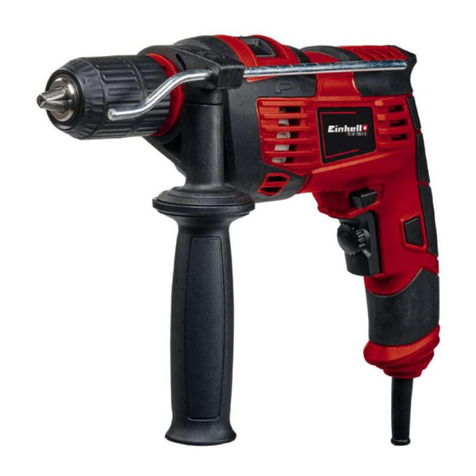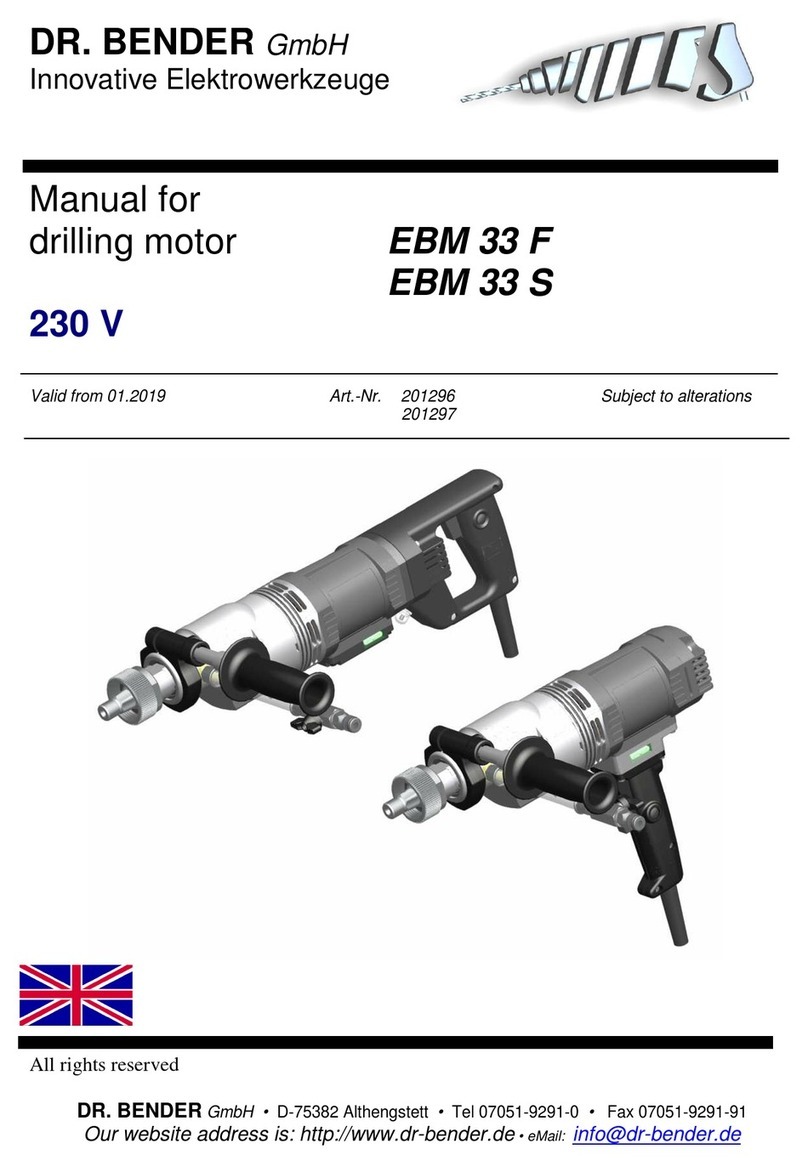virginia abraives VA-CD3 User manual

Model
2851 Service Road
Petersburg, VA 23805-9347
VA - CD3
Item#

1
WARNING To reduce the risk of injury, user must read instruction manual
1. General Power Tool Safety Warnings
WARNING: Read all safety warnings and all instructions. Failure to follow the warnings and
instructions may result in electrical shock, fire, and/or serious injury.
Save all instructions for future reference.
1) Work area safety
a. Keep work area clean and well lit.
b. Do not operate power tools in the presence of flammable liquids, gases, or dust.
Power tools create sparks which may ignite the dust or fumes.
c. Keep children and bystanders at a safe distance while operating a power tool.
2) Electrical safety
a. Power tool plugs must match the outlet. Never modify the plug in any way. Do not
use any adapter plugs with earthed (grounded) power tools.
b. Avoid body contact with earthed or grounded surfaces, such as pipes, radiators,
ranges, and refrigerators.
c. Do not expose power tools to rain or wet conditions. Water entering a power tool
will increase the risk of electric shock.
d. Do not abuse the cord. Never use the cord for carrying, pulling, or unplugging the
power tool. Keep cord away from heat, oil, sharp edges, or moving parts. Damaged
or entangled cords are dangerous and increase the risk of electric shock.
e. When operating a power tool outdoors, use an extension cord suitable for outdoor
use.
f. Always use the Ground Fault Current Interrupter (GFCI) protected supply to protect
against electrical shock.
3) Personal safety
a. Stay alert, watch what you are doing, and use common sense when operating a
power tool. Do not use a power tool while you are tired or under the influence of
drugs, alcohol, or medication. A moment of inattention while operating power tools
may result in serious personal injury.
10
CE Declaration of Conformity
We:
Declare that the product detailed below:
Diamond core drill
Model: VA – CD3
Satisfies the requirement of the Council Directives:
Machinery Directive 2006/42/EC
Low Voltage Directive 2006/95/EC
Electromagnetic Compatibility Directive 2004/108/EC
And complies with these standards:
EN60745-1/A11: 2010
EN60745-2-1: 2010
EN55014-1/A1: 2009
EN55014-2/A2: 2008
EN61000-3-2/A2: 2009
EN61000-3-11: 2000

9
Environmental Protection Guarantee
Environment Protection
Waste electrical products should not be disposed of with household waste. Please recycle
where facilities exist. Check with your local Authority or retailer for recycling advice.
6. Solution to the Problems During Using
Problems Possible Reasons Solution
Motor doesn’t
run when
connected to
power supply
1. Power supply disconnected
2. Switch breaker is tripped
3. Brush is not contacting the
commutator
4. The winding of stator & rotor circuit
open
1. Check and connect power supply
2. Check and replace switch
3. Replace electric brushes
4. Check or replace stator & rotor open
circuit
Heavy sparks
and ring
sparks occur
on
commutator
of motor
1. Rotor winding has short circuit or
open circuit
2. Brush spring positioned improperly
or making poor contact
3. Worn commutator
1. Repair or replace rotor
2. Adjust the spring pressure
3. Replace with new commutator or
motor
Drill vibrates 1. The core rig base is loose
2. The gap between elevating body and
square rack has slipped.
3. Elevating body and connecting bolts
are loose
1. Reassemble and tighten the frame
2. Adjust the gap
3. Check and tighten bolts
Drilling
progress is
slow
1. Drill bit worn
2. Chips or aggregate is loose in gap
3. Drill vibrates
4. Adjust the clutch
1. Replace core bit
2. Stop the drill, remove the foreign
materials from gap
3. Adjust and tighten connecting bolt
4. Tighten nuts on the clutch
7. Standard Accessories
Electric brush 2 pieces
8. Main Part List and the Breakdown Drawing
The parts list of 433-20000 Virginia Abrasives Core Drill
2
b. Use personal protective equipment. Always wear eye protection. Protective
equipment such as dust mask, non-skid safety shoes, hard hat, and hearing
protection will reduce the likelihood of personal injuries.
c. Ensure that the switch is in the off-position before connecting to the power source to
prevent unintentional starting.
d. Disconnect the tool from the power source before moving adjusting or carrying the
tool.
e. Remove any adjusting tools before turning the power tool on.
f. Never operate power tools with the guard removed.
g. Do not overreach. Keep proper footing and balance at all times. This enables better
control of the power tool under varying operating conditions.
h. Dress properly. Do not wear loose clothing or jewelry. Keep hair, clothing, and
gloves away from moving parts.
i. Use of dust collection equipment can reduce dust-related hazards. Use appropriate
personal protective equipment designed for the conditions and materials being used.
4) Power tool use and care
a. Do not force the power tool. Use the correct power tool for your application.
b. Do not use the power tool if the switch malfunctions. Any power tool that cannot be
controlled with the switch is dangerous and must be repaired.
c. Disconnect the plug from the power source before making any adjustments,
changing accessories, or storing power tools.
d. Store idle power tools out of the reach of children. Do not allow persons unfamiliar
with the power tool or these instructions to operate the power tool. Power tools are
dangerous in the hands of untrained users.
e. Properly maintain your power tools. Check for misalignment or binding of moving
parts, broken or damaged parts, and any other condition that may affect the power
tool’s operation. If damaged, have the power tool repaired before use.
f. Keep cutting tools sharp and clean. Properly maintained cutting tools with sharp
cutting edges are less likely to bind and are easier to control. Never use a damaged
blade. Discard damaged blades immediately.
g. Always use power tools and accessories in accordance with manufacturer’s
instructions. Take into account, the working conditions and the proper application.
Use of power tools for unapproved applications could result in injury or property
damage.

3
5) Service
a. Have your power tool serviced by a qualified repair person using only identical
replacement parts. This will ensure the continued safe operation of the power tool.
2. Diamond Core Drill Safety Warnings
1) Use auxiliary handles supplied with the tool. Auxiliary handles allow for good control and
support safe operation.
2) Consider work area environment: Do not use the diamond core drill in damp or wet
locations. Do not expose diamond core drill to rain. Operate only in a well-lit area. Do not
use in the presence of flammable vapors or liquids. Electrical motors produce sparks during
normal operation.
3) Grounding of Class I tools is necessary while in use to protect the operator from electrical
shock. Class I tools are equipped with an approved three-conductor cord and three-prong
grounding-type plug.
4) Warning! The power outlet must be fitted with proper grounding. Do Not insert Class I
tools into the socket without grounding. Never use a Class I tool with a damaged or missing
ground plug.
5) Use a 12 gauge extension cord when tool is used outdoors or indoors. Use only three-
conductor cord with approved grounding.
6) Be aware of your surroundings when working at elevation. Hard hat and fall protection may
be indicated. Secure the area under and around the work location.
7) Use a garden hose and quick change adapter to supply water to the core bit. The water
valve on the core drill can be used to adjust the water flow.
8) To protect the user and the core drill, ensure that there are no water leaks.
9) Inspect the hoses and other critical parts of the tool for wear. If water leaks from the
testing hole of the gear box, the seal must be repaired immediately to avoid damage to the
machine and possible hazard to the operator.
10) The maximum permitted pressure of water supply is 17 psi.
11) Warning! Never to use the tool without the GFCI provided.
12) Test the correct operation of the GFCI before starting work. The red light will be “ON”
after pressing the “RESET” button. The light will be “OFF” after pressing the “TEST” button.
Only operate the tool when the GFCI works properly.
13) Replacement of the plug or the power cord shall always be carried out by the tool
manufacturer or authorized service center.
14) To ensure the safety of the operator and others, make certain that water is diverted
away from the motor and other electrical equipment. Use a water containment system
where appropriate and when working at elevation.
8
Main Technical Parameter
Type 433-20000
Style Portable
Max. Drilling Diameter 5 inches
Rated voltage 120V
Rated frequency 60Hz
Rated input power 1500 W
No load speed 3450/1800/950 min
Weight 22 lbs.
External Dimension 410x100x375 mm
Noise pressure level / K=3dB(A) dB(A)
Noise power level / K=3dB(A) dB(A)
Vibration / K=1.5m/s2A
h,DD=m/s2
5. Maintenance
1) Contact an authorized service center for service and repair. Do not use unapproved
replacement parts.
2) Check the electric brushes and commutator periodically. When the brushes are worn to the
about 3/16” they must be changed. Use only original equipment replacement parts to
ensure proper operation and commutator damage. Both brushes must be changed at the
same time. If you find heavy sparking during operation or the commutator is worn or
burned, repair or replace the commutator.
3) The drill should be checked and repaired periodically after use. Check the condition of the
power cord and plug. Verify proper grounding. Replace seals as needed and check
lubricating oil.
4) Replace the rubber seals as required. Stop using the drill immediately if water is flowing
from the top of the drill, please check and replace the sealing washer immediately. The
gears in the gear case use lubricating oil, if you find lubricating oil penetrating the mid-
cover air port, please replace the rubber sealing oil ring on the rotor spindle. The brand of
special lubricating oil is 110# industrial gear oil. Keep the drill clean and dry. When not in
use, store the drill a clean dry place. Remove the core bit when storing the drill. Apply a
small amount of grease to the threads prior to storage.

7
FIGURE 3
4
3. Handling Instructions
1) Core bit installation:
Thread the core bit (by hand) onto the threaded drive of the drill. Use a wrench to
secure the core bit.
2) Check the voltage:
Make sure the voltage of the power source is the same as required on the
nameplate of the tool. The voltage should be kept at +/-5%.
3) Cutting bit installation:
Install the diamond core bit carefully. The end thread shall match with the end
output shaft. Apply a small amount of grease to the output shaft prior to
installation of the core bit. Install the bit by hand and tighten securely using a
wrench. After tightening the core bit, allow the drill run under no-load for one
minute prior to using.
4) Ensure proper water supply:
A reliable water supply is required for proper core bit performance. The water
flushes slurry created during the cutting process from the cutting area and cools
the core bit.
5) Drilling a core:
Open the water valve. Start the drill under no-load conditions. When water begins
to flow you can begin the drilling process. When drilling with a portable drill, angle
the drill to a slightly inclined angle (See fig. 1). Drill a crescent-shape notch on the
surface of the concrete. Continue drilling while adjusting the drill to the desired
drilling angle. Increase pressure when the drill bit is into the work piece about
¼”depth. Drill slowly and uniformly. Do not use excessive force. Apply moderate
pressure and allow the tool to do the work. During drilling, if the speed of motor is
reduced significantly, this indicates an excessive load. Reduce the pressure
accordingly to maintain normal operating speed. If the motor overheats, shut off
the drill immediately. Allow the motor to cool down.
6) Drilling though re-bar:
When encountering re-bar in the slab, the clutch on the output shaft may slip and
the GFCI may trip if the drill is forced into the steel reinforcement bar. It is normal
for the cutting progress to slow when drilling through re-bar. Forcing the drill will
damage the drill and the core bit. Allow extra time for drilling through re-bar.

5
7) Various Materials:
If vibration or clutch slip occurs when drilling reinforced concrete, the drill thrust
should be reduced. If broken concrete or gravel falls into the bore, rebar may catch
on gaps in the core bit segments resulting in overheating of the motor. Remove the
drill bit from the hole and clean the gap. Let the drill cool down before continuing
to drill. When drilling thick asphalt, the load on the drill will be increased, take care
to drill slowly, uniformly, and monitor the motor speed. If the clutch slips
continuously, reduce the cutting pressure.
8) Remove drill core:
When the drill bit nearly drills through the slab or wall, take care to reduce the
cutting pressure to avoid a sudden breakthrough. Remove the core bit from the
work piece gently by:
- Remove bit by jogging the trigger
- Unplug drill from electrical source
- Clean the bit
- Gently tap core bit with non-metallic material and/or a rubber hammer to remove
the cored material from the inside of the bit
- Be careful in removing the core material and damaging the drill bit
- Continue operating
6
9) Keep the motor ventilated during use:
During operating the ventilated notch of motor should not be clogged with dirt to
avoid overheating and damage to the motor.
10) Waterless operation prohibited:
When operating, there should be plenty of water flow onto the surface of the drill
bit to clean and cool the bit.
11) Keep the motor dry:
Keep the enclosure of the motor away from water to avoid electrical shock. Control
the water flow away from the operator and drill by drilling in a horizontal or vertical
downward orientation only.
When changing gears, the machine must be stopped. Unplug the machine. Turn the
adjustment knob by hand while gently turning the core bit by hand. This will allow the
gears to un-mesh and mesh in the newly selected speed. Never adjust the gears while the
motor is running. Doing so will damage the gears and void the warranty.
4. Structure, Feature, and Usage
This tool is a portable diamond core drill, it is designed for three-gear speeds.
High gear (gear III) is suitable for a core bits up to 2”.
Medium gear (gear II) is for core bits up to 3”.
When drilling holes greater than 3” a core rig must be used.
Low gear (gear I) is suitable for holes from 3 to 6” diameters. The core drill is equipped
with safety friction clutch which protects the user and the motor. See fig. 3 for an
expanded diagram of parts.


Customer Service: 1.800.446.1805
Popular Drill manuals by other brands

Fortum Proffesional
Fortum Proffesional 4770667 Translation of the original user manual
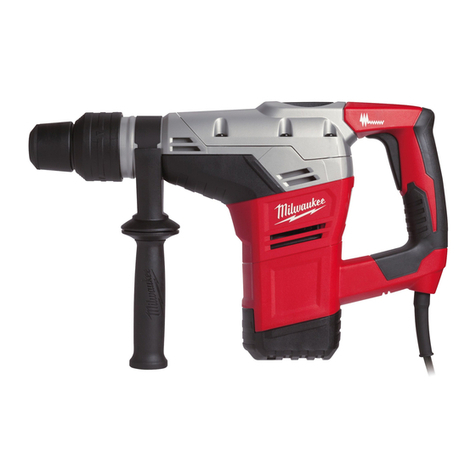
Milwaukee
Milwaukee K 540 S Original instructions
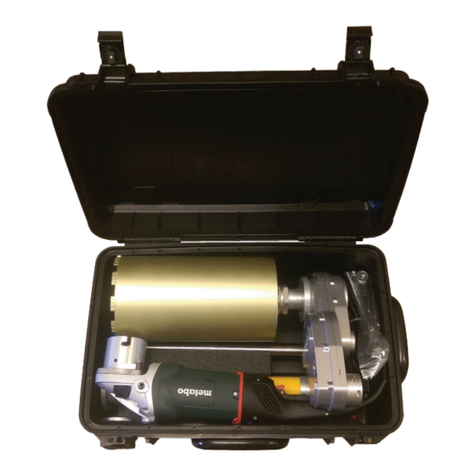
U.S.SAWS
U.S.SAWS CORE EZ operating manual
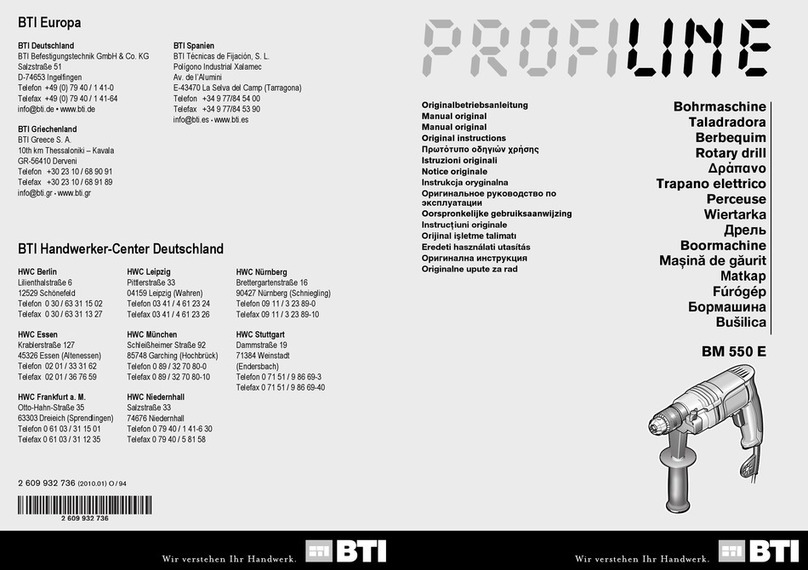
BTI
BTI PROFILINE BM 550 E Original instructions
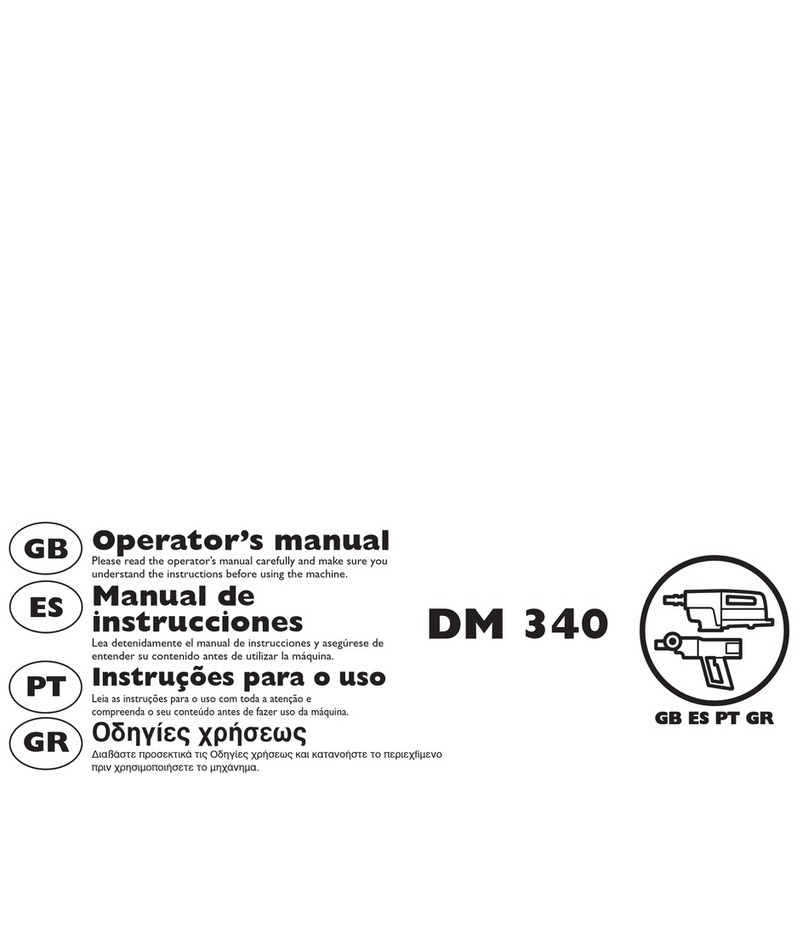
Husqvarna
Husqvarna 1152417-30 Operator's manual
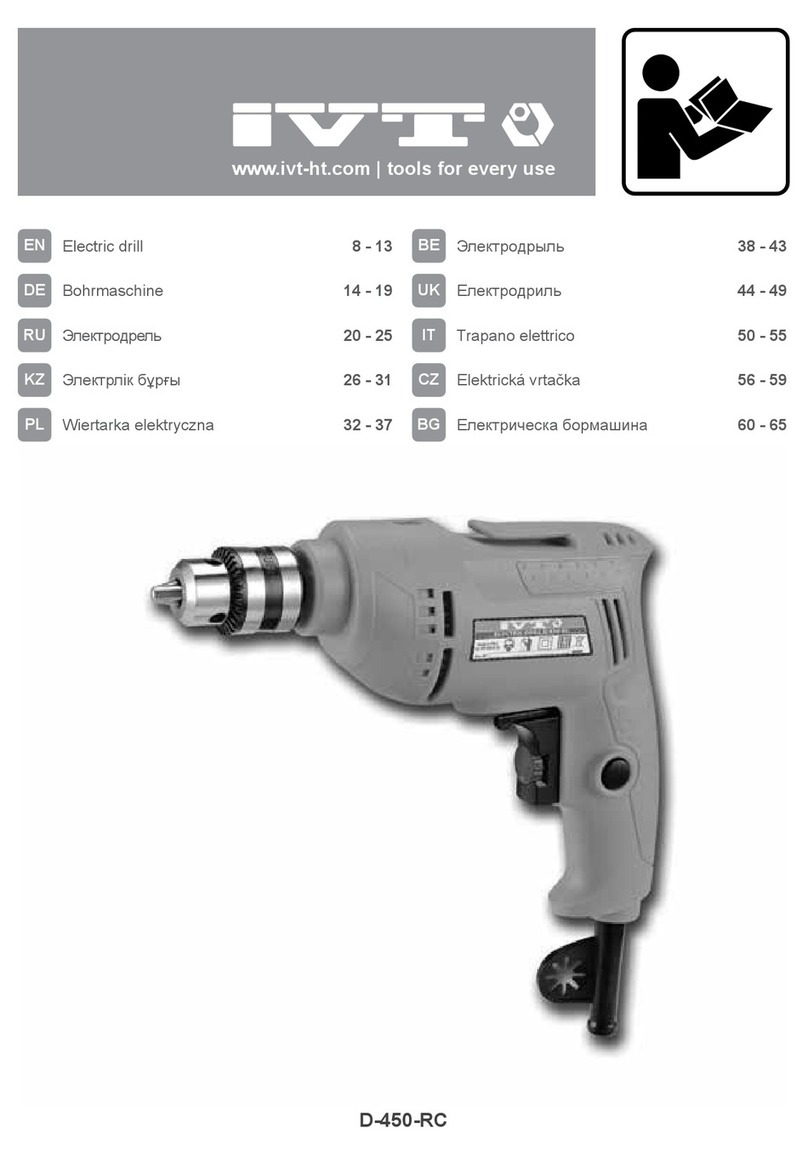
IVT
IVT D-450-RC instruction manual

Bosch
Bosch Professional GBH 8-45 DV Original instructions
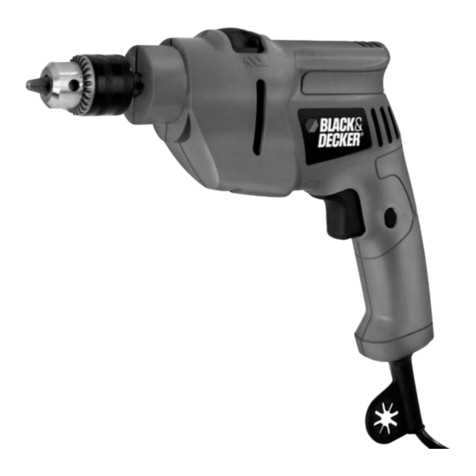
Black & Decker
Black & Decker KR505 instruction manual
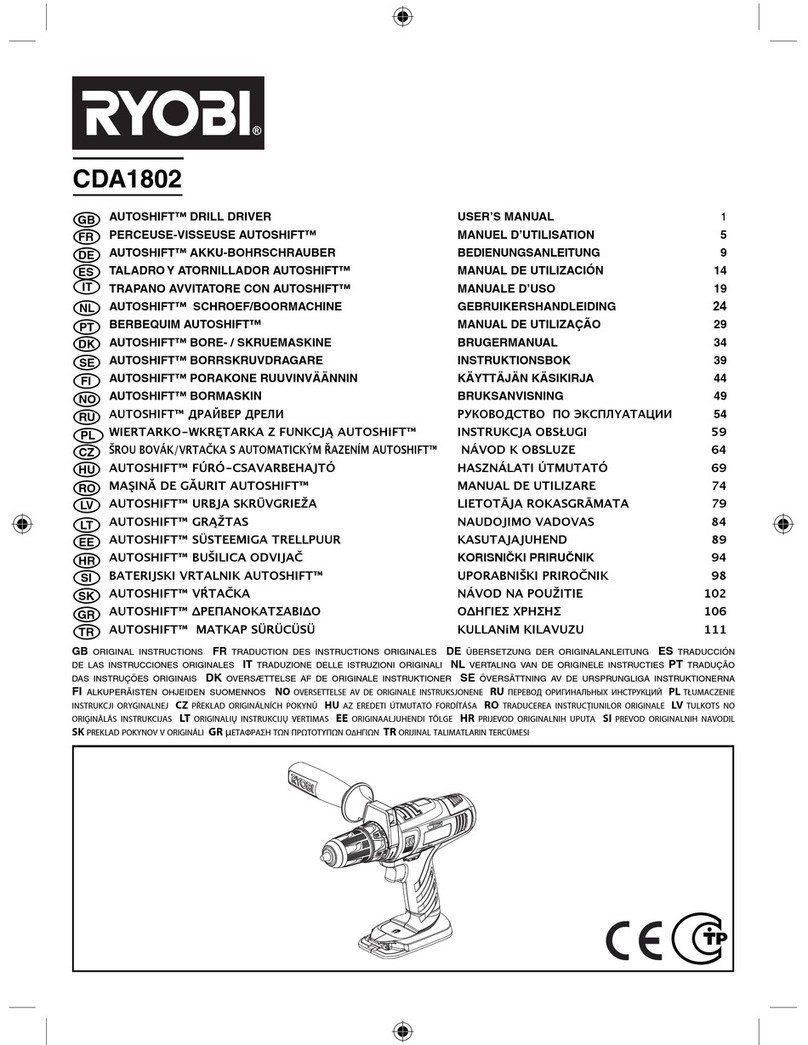
Ryobi
Ryobi Autoshift CDA1802 user manual

EINHELL
EINHELL TE-DY 18 Li operating instructions

Parkside
Parkside PABSP 20-Li B2 Operation and safety notes
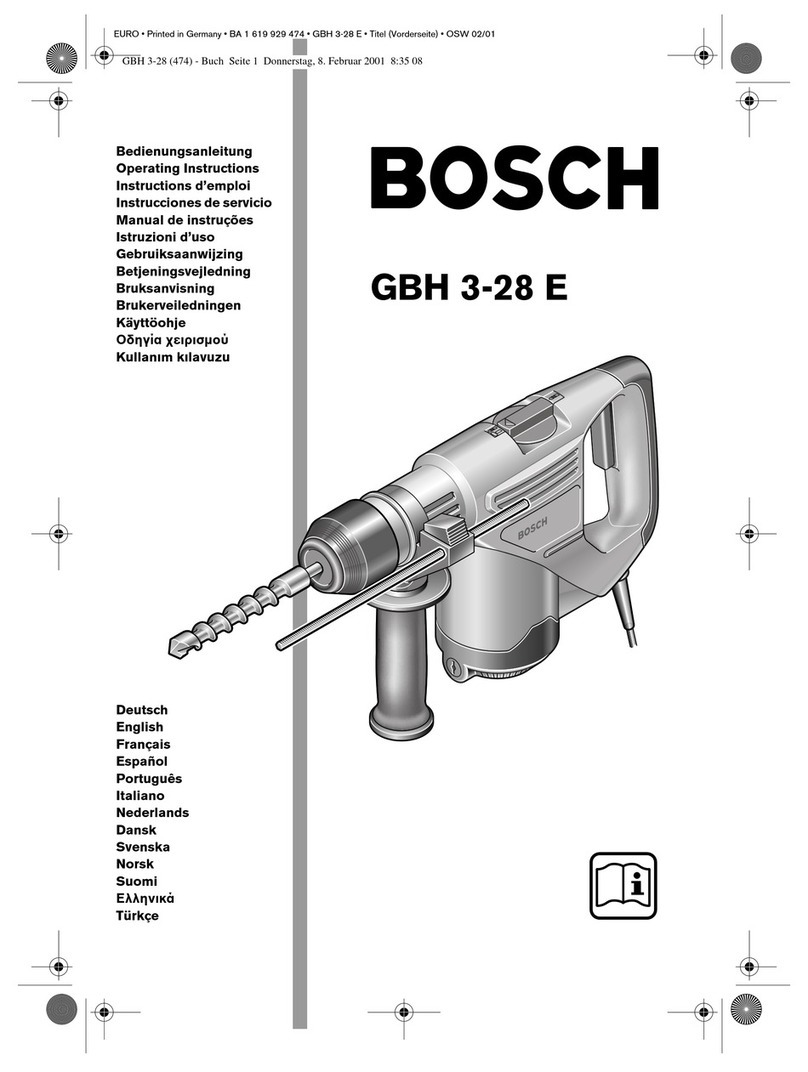
Bosch
Bosch GBH 3-28 E operating instructions



